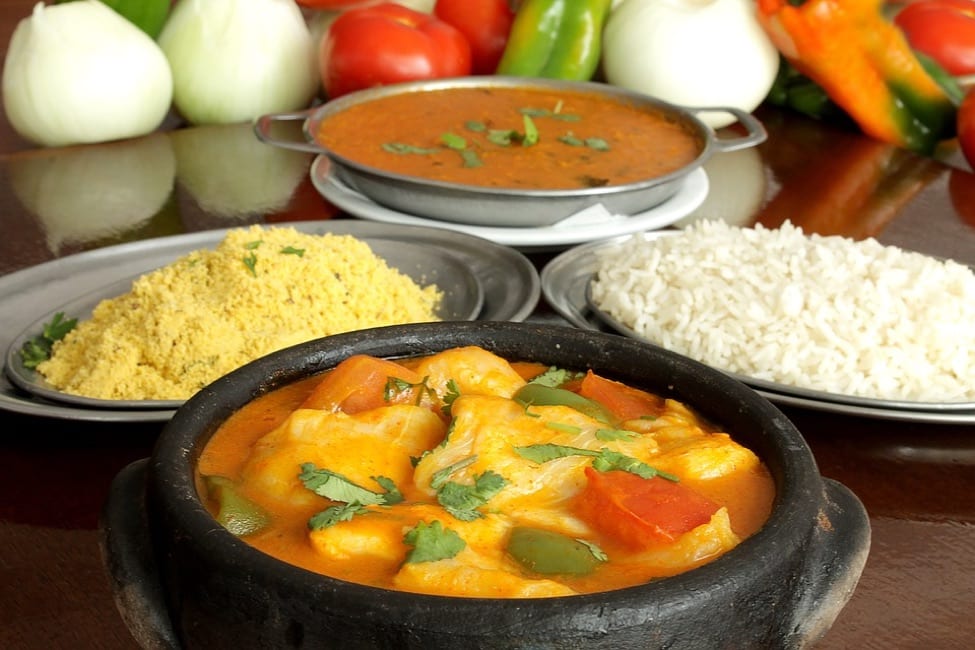
Don’t use any other oil apart from palm oil, it will affect the authentic aroma and taste of buka stew.Covering it causes condensation, which in turn affects the authentic flavor of buka stew. If you want to achieve the authentic flavor of Yoruba buka stew, cook your stew from start to finish with the pot open.It is actually a pepper-based stew, so in this case, you have to use much peppers as your base, but keep the tomato simple.

One important tip for cooking this recipe is simply the ratio of tatashe (bell peppers), rodo (scotch bonnet) onions and tomatoes, like I have mentioned earlier, this stew is not like the usual stew we make everyday using equal amounts of bell peppers and tomatoes such as this fish stew.Work with few seasonings: For a traditional buka stew, no extra spices are required except salt and seasoning cubes, these are the few seasonings that are needed for the stew to taste amazing.Different parts (intestines, tripes, beefs etcetera) of the meat can be used. You can grill, boil then fry the meat you want to use for this recipe. Also, make sure the ratio of the red bell you use is more than the tomatoes this will help achieve a rich stew color and great taste. If you don’t want to go 100% on the palm oil, do a half and half with vegetable oil.

To cook this stew, it is important to use palm oil as it can’t be compromised at all in this dish. I remember when my mom was still in food business she fried onions in the bleached oil (this also contributes to the taste) before other ingredients. Seasonings used in preparing the stew are minimal, too much seasoning/spices will alter the taste. It is prepared with soft peppers, not spoil but soft, also the palm oil is bleach to prepare this stew. It has a distinct taste and delicious smell that would attract you from afar.
BUKA NIGERIAN HOW TO
How To Make Buka Stewīuka stew is different from the regular stew prepared. It’s traditionally prepared with numerous parts of cow which are deep fried before being added to the stew. What defines this recipe is the use of palm oil and open flame cooking. ‘Iya Basira’s’ stew or Buka stew has been saving lives since forever, ((Iya Basira is an alias for some of the many women who owns a Buka or ‘mama put’ in common parlance)). It means “hole in wall” based on the size of these local restaurants. The word “Buka” is a very popular word in Nigeria, originating from the northern part of the country. Let me show you how to make this perfect Nigerian stew in easy steps. It is made with assorted meat, cooked in tomato base (Nigerian pepper mix) and palm oil. This Recipe is simple, versatile, delicious and easy to make. Nigerians love eating in bukas because food is cheaper, fresh and provides diverse local dishes without the stress of cooking.

Season with some seasoning cubes, add chopped onion and leave to cook for about 25-30 minutes until tender and set aside. Also wash the beff and cut into small chunks alongside the assorted beef season with some seasoning cubes, chopped and boil.

Next properly wash the assorted beef, taking time to scrape out the ponmo and release saturated fats in the intestine.Be sure to keep the pot closed until it cools a bit. Pour some palm oil into a pot and set over medium heat for about 10 minutes before turning off the burner. This is a smokey process and as such should be done in a well ventilated kitchen. Start by bleaching the palm oil until it becomes as clear as vegetable oil. The first step to preparing Nigerian buka stew is the palm oil base.Assorted meat: Cow Intestines, Tripe (aka Shaki), Ponmo, Beef (Red meat).In this recipe, we have detailed a step by step recipe to making some homemade delicious Nigerian buka stew: One agreeable fact about these stews is that they are very delicious and usually require more than one serving.


 0 kommentar(er)
0 kommentar(er)
